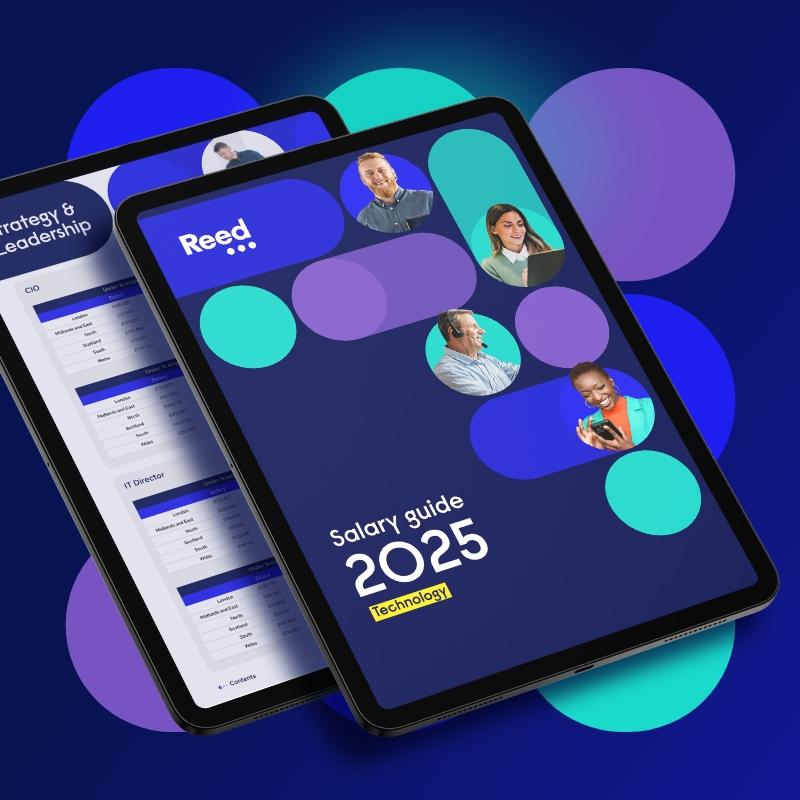Over the past two decades, technology has developed into an essential part of our everyday routines, both in a personal and professional capacity.
For businesses, technology in the workplace has adapted operational processes, increased employee synergy, and brought businesses a few steps closer to their consumers.
Workplace technology is well suited to helping businesses grow, achieve goals and heighten employee experiences, leading to better employee retention and attraction strategies.
We explore how technology in the workplace is constantly evolving, and how businesses can implement innovative technology solutions to ultimately stay ahead of the competition.
The changing technology in the workplace over the past 50 years
The workplace has rapidly changed due to the advancements in technology and the growth of online platforms. From the first use of the Lyons Electronic Office (LEO) computer in 1951, to American computer programmer Ray Tomlinson sending the first email 20 years later, change is constant. Today’s modern office is rife with digital workplace technology that enables businesses to thrive in environments once considered a pipe dream.
On the back of word processors being introduced in the 1970s, the internet connecting us all in the 1990s and the introduction of cloud storage by the turn of the millennium, businesses have adapted their working practices to make sure they sustain and maintain their business models in light of ground breaking changes to the workplace.
More recently, due to the impact of the Covid-19 pandemic, technology has transformed to keep people engaged, productive and accessible from anywhere in the world. Research by McKinsey highlighted that 93% of companies they surveyed said they had to shift to remote work due to the pandemic. At the same time, 62% said they had to deal with increasing customer demand for online purchase and services, while 34% said there was an increase in migration of their company’s assets and tools to cloud databases for remote access.
Because of the shift in working conditions, companies now have the ability to harness advanced technology – such as video conferencing equipment and interactive systems – as the expectation is now for technology to support the entire workplace experience.
The importance of technology in the workplace
Technology continues to help businesses grow profits, adapt to changes and redefine their proposition. Because of digital-based technologies, communicating with both clients and employees is easier than ever before.
Technology affects communication in the workplace on multiple levels; the art of being able to communicate through a variety of means is even more important during a post-pandemic era, where many organisations are still working in a remote or hybrid capacity. According to research conducted by Finder, 60% of the UK’s adult population worked from home during the first coronavirus lockdown.
Cloud-based platforms such as Microsoft Teams, Zoom and Office 365 continue to provide a pathway for companies to remain connected. They produce a variety of applications and supply features such as a chat/call function, file storage and sharing, alongside document collaboration to significantly enhance group project work and response times.
Having the latest technology allows companies to stay competitive and provide the best quality service possible.
The advantages of new workplace technologies
Many business owners now understand the important role that technology plays in the workplace as it continues to:
Increase employee productivity
Enhance product and service development
Maximise team-building opportunities
Here are some of the advantages of new technology in the workplace:
Increases security
With cyber-attacks increasing in volume and size year on year, digital security measures are able to protect files and systems, making sure business isn’t compromised. Security technologies like antivirus and authentication software have become both necessary and effective, while many businesses have also begun to implement employee training to help reduce the amount of data breaches.
Improves productivity and efficiency level
Advances in workplace technologies have seen companies increase their productivity and efficiency levels exponentially. Administration processes that were once considered solely manual and time-consuming are now completed via digital tools, applications and software systems. Employees now have the ability to focus on tasks that generate revenue and drive business forward.
Heightens innovation and creativity
Technology plays a significant role in enhancing employee creativity in the workplace. In marketing, technology is an important tool used to create and implement a strategy. Social media platforms help to initiate conversations between workers and potential clients/customers, while platforms like Microsoft Teams and Zoom are now an essential part of team communication, planning, and managing workflows.
The technology skills that the modern worker need in today’s workplace
Modern technology has shifted the way that business is conducted across a plethora of industries. According to research by CIPD into workplace technology, of those employees experiencing a technology use change, 50% feel that they now need more skills and knowledge to carry out their role.
The impact of technology in the workplace has never been greater regarding employee needs. Being attuned to workplace technologies is no longer seen as a bonus, but rather an expectation for employees. Workplaces, alongside digital setups for working from home, now depend on technology as a key driver of business operations, from office management systems to customer relationship management (CRM) tools.
In addition to soft skills, employers should be looking for candidates that possess the technology skills needed in the workplace and who are familiar with tools that are highly transferable across multiple roles and industries. Whether employees need to be able to share information via social media, input data into spreadsheets and reports, present effectively or be a confident communicator over email, Microsoft Teams or other platforms, having a workforce fully enveloped in technology will create a stronger business culture, both internally and externally.
Planning ahead for technological advances
Workplace technologies have evolved at a faster rate because of the pandemic. Technologies that are sure to have a huge impact on the recruitment process in the near and present future are artificial intelligence (AI) and ‘always-on’ technology.
AI has grown substantially in recent years, as multiple sectors utilise its ability to enhance production and shorten the time taken to complete tasks. For recruitment, AI can be used to assist companies in identifying the best talent when a short turnaround is needed.
New AI technologies are able to streamline parts of the recruiting workflow by sifting through candidate applications. Because of this, hiring managers are given time back to increase, maintain and develop relationships with jobseekers and clients to find the talent their business desires.
As AI grows further, businesses will look to invest in AI in order to augment their recruitment technology, as remote interviews and working models continue to take up a greater share of the marketplace.
Technology has become a critical driver of business outcomes, and the expectation is that it is ‘always-on’. Always-on technology – such as chatbots and responsive operating systems – continue to add value to companies who want to stay ahead of the competition. Adapting to technology will help to deliver a secure, reliable and progressive work environment that keeps employees engaged and productive.
How businesses can take advantage of advances in recruitment technology
Using technology in processes like recruitment has many benefits, including increased accessibility, improved candidate experience and sifting speed, according to data found in a CIPD survey on using technology to improve hiring and onboarding.
To ensure companies get the most out of recruitment technology, they need to make sure each solution is implemented carefully and provides a great user experience for both the hiring manager and the jobseeker.
Being able to identify and reach talent in a competitive job market is essential. Businesses need to harness technology to fully understand supply and demand when it comes to talent, before being able to accurately target talent, contact jobseekers and track the progress of recruitment strategies.
While there is an emphasis on utilising technology within the recruitment process, if the balance between automated technology and human interaction is wrong, it can result in a more impersonal candidate experience and impact the attractiveness of a role.
Utilise automated technology to help sift through applications before harnessing that human touch to contact any potential candidates. The best recruitment technology strategies focus on the needs of both the employer and the jobseeker for a seamless and progressive process.
It can be difficult to keep up with technological advances but doing so can help transform and grow your business. From employee productivity levels to enhanced IT security, coming to grips with workplace technology can set a new precedent in how efficiently and effectively a company can increase its profitability and reputation.
Senior leaders are now tasked with creating a healthy digital culture, and in doing so can harness the power of workplace technology to reinforce an atmosphere that allows employees to work towards creating a better, more advanced future.
Looking for your next hire? Contact a member of our team today.





